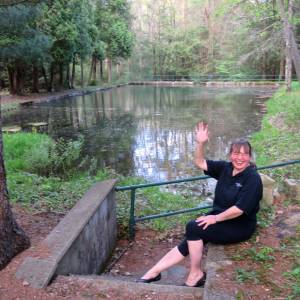The Dance of the Tundra Swan
We were out and about for the day. Our travels included the gameland on the closed road by the shooting range, for some exercise, and then Lupita's for some tostadas. The sun and clouds were coming and going. It was a bit breezy. A nice spring day.
As we were driving from point A to point B, I remembered something: someone on my Facebook friends list had recently posted a photo of a few tundra swans, migrating through our region. He'd said he'd found them along Tadpole Road. Guess what: we were ON Tadpole Road!
There was lots of water standing everywhere from recent rains, and I kept an eye out as we traveled along. And then, in a huge farm field with lots of puddles, I saw them! "LOOK! THAT'S THEM!!"
There was a blue car pulled over by the side of the road with a guy inside. I knew he was there for the swans. At that point, we were on our way to Lupita's. We were starving. We hadn't eaten yet.
So we agreed we'd go and eat, and then we'd come back and take a closer look at those four white swans. And so that is exactly what we did. My husband parked in a little gravel parking lot by a Seventh Day Adventist Church, and I took my camera and spent about 10 minutes along the road watching and photographing the birds.
I wished for my monopod, but did not have it. So I ended up using a little hay bale, and then part of the metal guard rail, to serve as my tripod. It worked out pretty well, and I got a whole bunch of decent photos.
In the picture above, the one swan seemed to be dancing, and I liked that. So this is the photo I've picked for the day. My soundtrack song is the Hooters, with And We Danced. I've included a few facts about tundra swans below, as well as several links where you may read more.
*They were once known as "whistling swans."
*Tundra swans mate for life by the age of 2 or 3.
*The oldest known tundra swan was 23 years, 7 months old.
*Tundra swans migrate day and night.
*Twice a year, tundra swans migrate: from their northern to their southern territories in the fall, and from their southern to their northern territories in the spring. This distance is 3,725 miles, or 6,000 km. According to a migration map I saw, these swans are on their way to the tippy-top northernmost parts of ALASKA. What a lovely and unusual treat to find them right here in central PA! Safe travels, bird friends!
Links:
What You Need to Know About Tundra Swans
Tundra Swans Wildlife Note
Cornell Lab All About Birds: Tundra Swan
National Geographic Kids: Tundra Swan

Comments
Sign in or get an account to comment.


